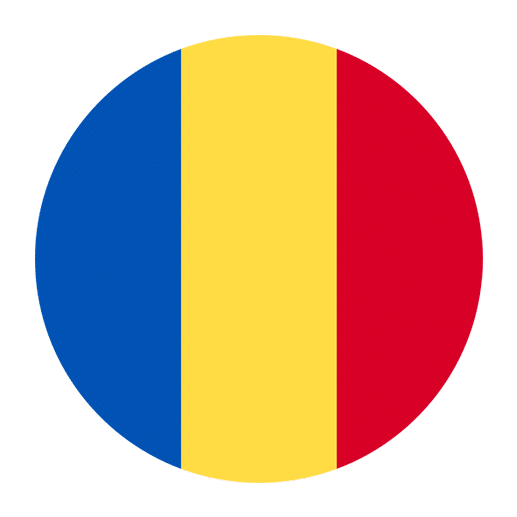Romanian, a Romance language spoken primarily in Romania and Moldova, offers a fascinating glimpse into the rich tapestry of history, culture, and linguistic development in Eastern Europe. If you’re an English speaker looking to broaden your linguistic horizons, understanding the Romanian alphabet is an excellent starting point. The alphabet is the foundation upon which you’ll build your reading, writing, and pronunciation skills. In this comprehensive guide, we will explore the Romanian alphabet, its unique characters, pronunciation rules, and some tips for mastering it.
The Romanian Alphabet: An Overview
The Romanian alphabet consists of 31 letters and is based on the Latin script, similar to the English alphabet. However, there are a few additional characters and diacritical marks that distinguish it. Here’s the complete list of Romanian letters:
A, Ă, Â, B, C, D, E, F, G, H, I, Î, J, K, L, M, N, O, P, Q, R, S, Ș, T, Ț, U, V, W, X, Y, Z
Now, let’s delve deeper into some of these letters and their unique pronunciations.
Special Characters and Diacritics
In Romanian, there are five letters with diacritical marks that are not present in the English alphabet:
1. **Ă (A-breve)**: This letter is pronounced like the ‘a’ in the English word “sofa”.
2. **Â (A-circumflex)**: Pronounced like the ‘a’ in “about” but with a more central, rounded sound.
3. **Π(I-circumflex)**: This sounds similar to  and has the same pronunciation rule, but it appears in different positions within words.
4. **Ș (S-comma)**: Pronounced like the English ‘sh’ in “shoe”.
5. **Ț (T-comma)**: This letter is pronounced like the ‘ts’ in “cats”.
Understanding and mastering these special characters is crucial as they frequently appear in Romanian words and can significantly alter meaning and pronunciation.
Pronunciation Guide
Let’s go through the Romanian alphabet letter by letter and discuss their pronunciations:
– **A**: Pronounced as ‘a’ in “car”.
– **Ă**: As mentioned, like the ‘a’ in “sofa”.
– **Â** and **Î**: Both pronounced like the ‘a’ in “about” but with a more central, rounded sound.
– **B**: Similar to the English ‘b’.
– **C**: Pronounced as ‘k’ before ‘a’, ‘o’, ‘u’, and as ‘ch’ before ‘e’ and ‘i’.
– **D**: Same as in English.
– **E**: Pronounced as ‘e’ in “bet”.
– **F**: Same as in English.
– **G**: Pronounced as ‘g’ in “go” before ‘a’, ‘o’, ‘u’, and as ‘j’ in “measure” before ‘e’ and ‘i’.
– **H**: Pronounced like the English ‘h’, except in some borrowed words where it may be silent.
– **I**: Pronounced as ‘ee’ in “see”.
– **J**: Pronounced like the ‘s’ in “measure”.
– **K**: Same as in English.
– **L**: Same as in English.
– **M**: Same as in English.
– **N**: Same as in English.
– **O**: Pronounced as ‘o’ in “more”.
– **P**: Same as in English.
– **Q**: Pronounced as ‘k’, but is rare and mostly found in borrowed words.
– **R**: Rolled, similar to the Spanish ‘r’.
– **S**: Pronounced as ‘s’ in “see”.
– **Ș**: Pronounced as ‘sh’ in “shoe”.
– **T**: Same as in English.
– **Ț**: Pronounced as ‘ts’ in “cats”.
– **U**: Pronounced as ‘oo’ in “boot”.
– **V**: Same as in English.
– **W**: Same as in English, but rare and mostly found in borrowed words.
– **X**: Pronounced as ‘ks’ in “box”.
– **Y**: Pronounced as ‘ee’ in “see”.
– **Z**: Pronounced as ‘z’ in “zoo”.
Common Pronunciation Challenges
One of the biggest challenges for English speakers when learning Romanian is the correct pronunciation of vowels and special characters. Here are some common issues and tips to overcome them:
– **Rolling the R**: Romanian uses a trilled ‘r’, similar to Spanish. Practice by placing the tip of your tongue against the roof of your mouth and pushing air out to create a vibrating sound.
– **Distinguishing  and Î**: Both sounds are unique to Romanian and can be tricky. They are pronounced similarly but appear in different contexts. Practice by listening to native speakers and mimicking the sounds.
– **Mastering Ș and Ț**: These sounds don’t exist in English, which can make them challenging. Practice by listening to words containing these sounds and repeating them.
Spelling and Writing Rules
Romanian spelling is relatively phonetic, meaning that words are usually spelled the way they sound. This is a great advantage for language learners as it makes reading and writing more straightforward. Here are some essential spelling rules:
– **Vowel Harmony**: Romanian words often follow vowel harmony, meaning that certain vowels tend to appear together in words.
– **Diacritical Marks**: Always include diacritical marks when writing Romanian as they can change the meaning of words. For example, “sînt” (they are) vs. “sunt” (I am).
– **Silent Letters**: Unlike English, Romanian has very few silent letters, making it easier to spell words phonetically.
Tips for Learning the Romanian Alphabet
1. **Flashcards**: Create flashcards for each letter, especially focusing on those with diacritical marks. This will help you memorize their shapes and sounds.
2. **Listening Practice**: Listen to Romanian radio, watch movies, or use language learning apps to hear native pronunciation.
3. **Writing Practice**: Practice writing the alphabet and simple words daily. This will help reinforce your memory and improve your writing skills.
4. **Language Exchange**: Find a language exchange partner who speaks Romanian. Practicing with a native speaker can provide valuable feedback and improve your pronunciation.
5. **Use Technology**: Utilize language learning apps and websites that offer pronunciation guides, interactive exercises, and quizzes.
Common Phrases and Words
To get you started, here are some common Romanian phrases and words that incorporate the special characters we discussed:
– **Bună ziua** (Good day)
– **Mulțumesc** (Thank you)
– **Ce faci?** (How are you?)
– **Te iubesc** (I love you)
– **Noroc** (Cheers)
– **Da** (Yes)
– **Nu** (No)
Conclusion
Learning the Romanian alphabet is an essential first step for anyone interested in mastering the language. While there are some unique characters and pronunciation rules to grasp, with consistent practice and the right resources, you’ll find yourself becoming more comfortable and proficient over time. Remember, language learning is a journey, and every step you take brings you closer to fluency. Happy learning!

